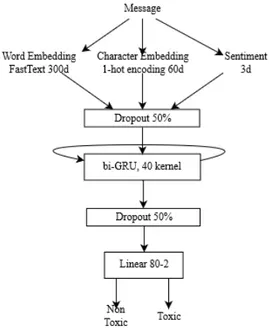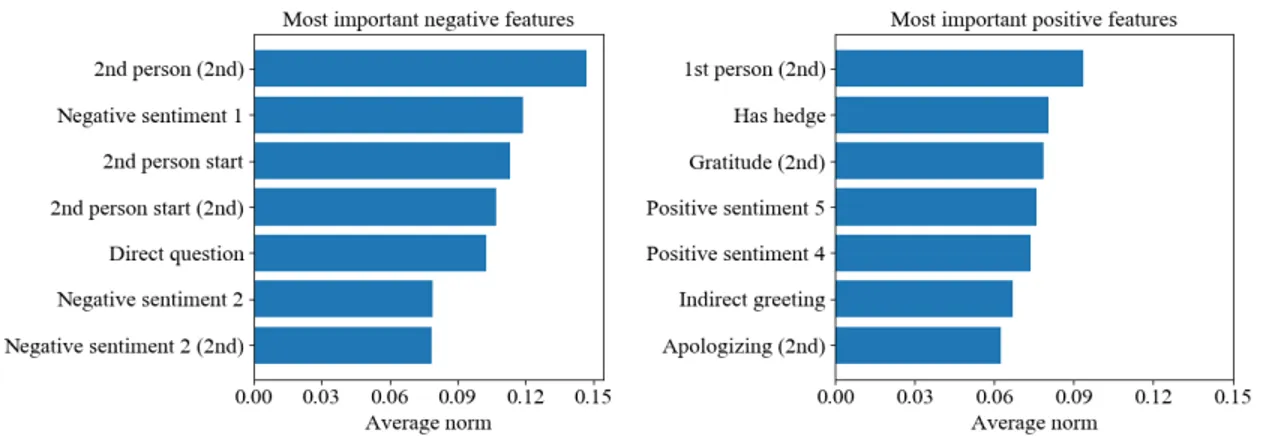Toxicité et sentiment : comment l'étude des sentiments peut aider la détection de toxicité
Texte intégral
Figure



Documents relatifs
Consequently, we try the upwind diffusive scheme associated to (1) and (7), and explain how we can obtain a good numerical approximation of the duality solution to the
In order to obtain compa- rable results, the tools had to fulfill the following criteria: stand-alone sentiment de- tection tool (i.e., not part of a larger system, such as
The goal is to provide an integrated view on news from different sources, to filter those news that have significant market impact and to help the users to decide how to react to
In the case when all the singular fibers of f are of Kodaira type I 1 , Gross-Wilson have shown in [GW] that sequences of Ricci-flat metrics on X whose class approaches c 1 (L)
In order to evaluate our system performance, we implemented a solution for the Message Polar- ity Classification subtask of SemEval-2014 Task 9 (Sentiment Analysis in Twitter)
The system extends the approach in (Passaro et al., 2014) with emotive features extracted from ItEM (Passaro et al., 2015; Passaro and Lenci, 2016) and FB-NEWS15 (Passaro et
Ranking Algorithm RA-SR In this approach we use a method named RA-SR (using Ranking Algorithms to build Sentiment Resources) [7], which produces sentiment inventories based
In our approach we use a knowledge base about the application domain to ex- tract related sub-features of high-level abstract features.. On the basis of such related sub-features